Discover 35 hidden attractions, cool sights, and unusual things to do in Kraków (Poland). Don't miss out on these must-see attractions: Wawel Castle, Wawel, and Wawel Cathedral. Also, be sure to include Sukiennice Museum in your itinerary.
Below, you can find the list of the most amazing places you should visit in Kraków (Lesser Poland).
Table of Contents
Wawel Castle
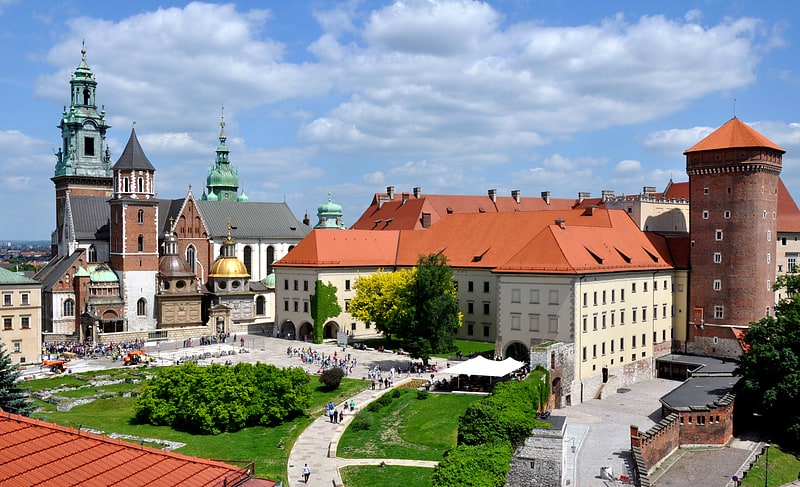
Also known as: Zamek Królewski na Wawelu
Medieval royal castle museum complex. The Wawel Royal Castle is a castle residency located in central Kraków, Poland, and the first UNESCO World Heritage Site in the world. Built at the behest of King Casimir III the Great, it consists of a number of structures from different periods situated around the Italian-styled main courtyard. The castle, being one of the largest in Poland, represents nearly all European architectural styles of medieval, renaissance and baroque periods. The Wawel Royal Castle and the Wawel Hill constitute the most historically and culturally significant site in the country.
The castle is part of a fortified architectural complex erected atop a limestone outcrop on the left bank of the Vistula River, at an altitude of 228 metres above sea level. The complex consists of numerous buildings of great historical and national importance, including the Wawel Cathedral where Polish monarchs were crowned and buried. Some of Wawel's oldest stone buildings can be traced back to 970 AD, in addition to the earliest examples of Romanesque and Gothic architecture in Poland. The current castle was built in the 14th-century, and expanded over the next hundreds of years. In 1978 Wawel was declared the first World Heritage Site as part of the Historic Centre of Kraków.
For centuries the residence of the kings of Poland and the symbol of Polish statehood, Wawel Castle is now one of the country's premier art museums. Established in 1930, the museum encompasses ten curatorial departments responsible for collections of paintings, including an important collection of Italian Renaissance paintings, prints, sculpture, textiles, among them the Sigismund II Augustus tapestry collection, goldsmith's work, arms and armor, ceramics, Meissen porcelain, and period furniture. The museum's holdings in oriental art include the largest collection of Ottoman tents in Europe. With seven specialized conservation studios, the museum is also an important center for the conservation of works of art.[1]
Address: Wawel 5, 31-001 Kraków (Stare Miasto)
Wawel
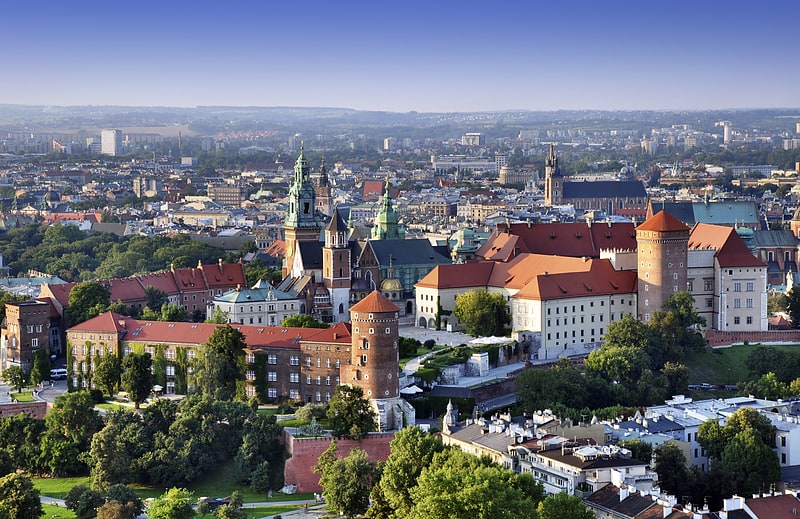
Castle in Kraków, Poland. The Wawel Royal Castle is a castle residency located in central Kraków, Poland, and the first UNESCO World Heritage Site in the world. Built at the behest of King Casimir III the Great, it consists of a number of structures from different periods situated around the Italian-styled main courtyard. The castle, being one of the largest in Poland, represents nearly all European architectural styles of medieval, renaissance and baroque periods. The Wawel Royal Castle and the Wawel Hill constitute the most historically and culturally significant site in the country.
The castle is part of a fortified architectural complex erected atop a limestone outcrop on the left bank of the Vistula River, at an altitude of 228 metres above sea level. The complex consists of numerous buildings of great historical and national importance, including the Wawel Cathedral where Polish monarchs were crowned and buried. Some of Wawel's oldest stone buildings can be traced back to 970 AD, in addition to the earliest examples of Romanesque and Gothic architecture in Poland. The current castle was built in the 14th-century, and expanded over the next hundreds of years. In 1978 Wawel was declared the first World Heritage Site as part of the Historic Centre of Kraków.
For centuries the residence of the kings of Poland and the symbol of Polish statehood, Wawel Castle is now one of the country's premier art museums. Established in 1930, the museum encompasses ten curatorial departments responsible for collections of paintings, including an important collection of Italian Renaissance paintings, prints, sculpture, textiles, among them the Sigismund II Augustus tapestry collection, goldsmith's work, arms and armor, ceramics, Meissen porcelain, and period furniture. The museum's holdings in oriental art include the largest collection of Ottoman tents in Europe. With seven specialized conservation studios, the museum is also an important center for the conservation of works of art.[2]
Wawel Cathedral
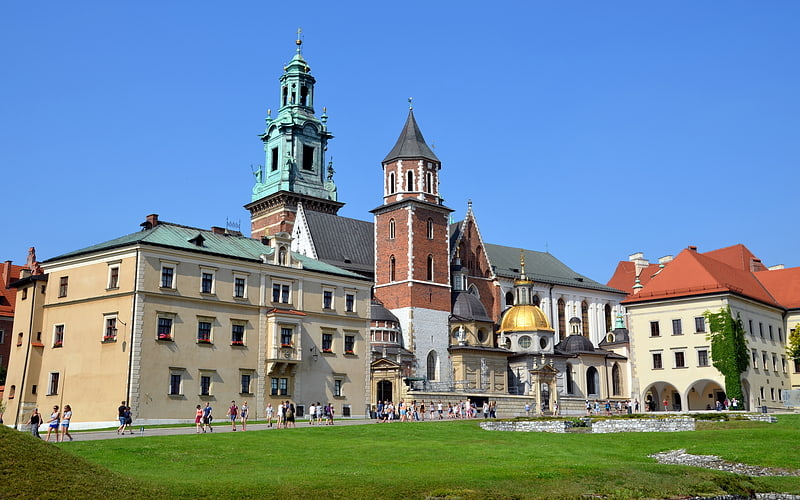
Gothic cathedral and national sanctuary. The Wawel Cathedral, formally titled the Royal Archcathedral Basilica of Saints Stanislaus and Wenceslaus, is a Roman Catholic cathedral situated on Wawel Hill in Kraków, Poland. Nearly 1000 years old, it is part of the Wawel Castle Complex and is a national sanctuary which served as the coronation site of Polish monarchs.
The current Gothic cathedral is the third edifice on this site; the first was constructed and destroyed in the 11th century and the second one, constructed in the 12th century, was destroyed by a fire in 1305. The construction of the existing church began in the 14th century on the orders of Bishop Nanker. Over time, the building was expanded by successive rulers resulting in its versatile and eclectic architectural composition. There are examples of Romanesque, Gothic, Romanesque, Baroque, Neoclassical and Neogothic elements in the Cathedral's façade and interior. The exterior is adorned by side chapels and representative mausoleums, most notable being the golden-domed Sigismund's Chapel.
It is the official seat of the Archbishop of Kraków and of the Archdiocese of Kraków. A symbol of Polish statehood and faith, the Cathedral hosts important religious events and annual celebrations. Karol Wojtyła, who in 1978 became Pope John Paul II, the day after his ordination to the priesthood offered his first Mass as a priest at the Wawel Crypt on 2 November 1946, and was ordained Kraków's auxiliary bishop in the Cathedral on 28 September 1958.[3]
Address: Wawel 3, 31-001 Kraków (Stare Miasto)
Sukiennice Museum

Also known as: Galeria Sztuki Polskiej XIX wieku w Sukiennicach
Museum showing 19th-century Polish art. The Gallery of 19th-Century Polish Art at Sukiennice, is a division of the National Museum, Kraków, Poland. The Gallery is housed on the upper floor of the Renaissance Sukiennice Cloth Hall in the center of the Main Market Square in Old Town Kraków.
The Gallery holds the largest permanent exhibit of the 19th-century Polish painting and sculpture, in four grand rooms. The majority of today's collection at Sukiennice comprises gifts from collectors, artists and their families.[4]
Address: Rynek Główny 3, 33-332 Kraków (Stare Miasto)
Oskar Schindler's Enamel Factory

Also known as: Fabryka Emalia Oskara Schindlera
Museum in Kraków, Poland. Oskar Schindler's Enamel Factory is a former metal item factory in Kraków. It now hosts two museums: the Museum of Contemporary Art in Kraków, on the former workshops, and a branch of the Historical Museum of the City of Kraków, situated at ul. Lipowa 4 in the district of Zabłocie, in the administrative building of the former enamel factory known as Oskar Schindler's Deutsche Emailwarenfabrik, as seen in the film Schindler's List. Operating here before DEF was the first Malopolska factory of enamelware and metal products limited liability company, instituted in March 1937.[5]
Address: Lipowa 4, 30-702 Kraków (Podgórze)
Church of St. Adalbert
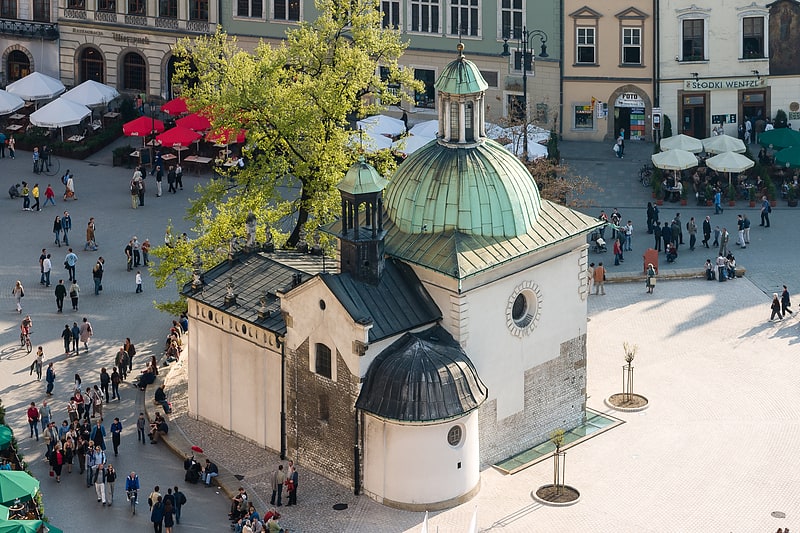
Also known as: Kościół św. Wojciecha w Krakowie
Romanesque 11th-century church. The Church of St. Adalbert or the Church of St. Wojciech, located on the intersection of the Main Market Square and Grodzka Street in Old Town, Kraków, is one of the oldest stone churches in Poland. Its almost 1000-year-old history goes back to the beginning of the Polish Romanesque architecture of the early Middle Ages. Throughout the early history of Kraków the Church of St. Wojciech was a place of worship first visited by merchants travelling from across Europe. It was a place where citizens and nobility would meet.[6]
Address: plac Mariacki, 31-042 Kraków (Stare Miasto)
Barbican
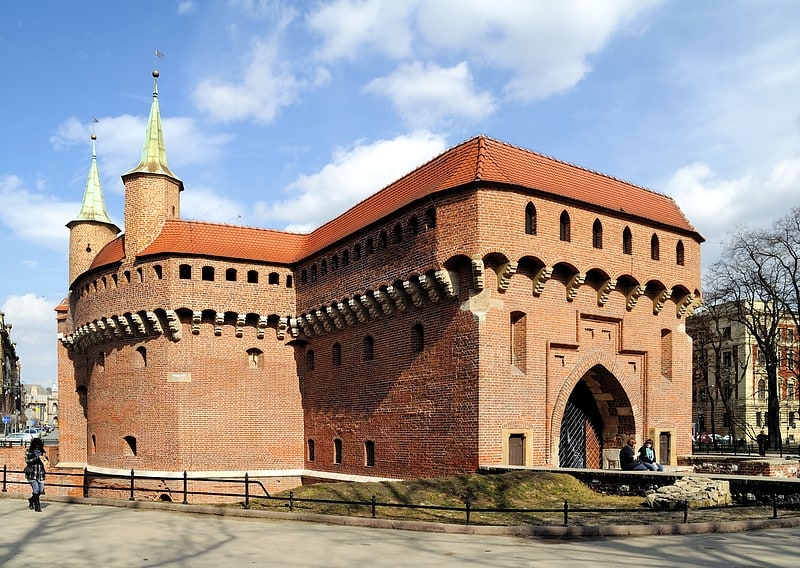
Also known as: Barbakan w Krakowie
Late 15th-century fortified gateway. The Kraków Barbican is a barbican – a fortified outpost once connected to the city walls. It is a historic gateway leading into the Old Town of Kraków, Poland. The barbican is one of the few remaining relics of the complex network of fortifications and defensive barriers that once encircled the royal city of Kraków in the south of Poland. It currently serves as a tourist attraction and venue for a variety of exhibitions.
Today the Barbican is under the jurisdiction of The Historical Museum of the City of Kraków. Tourists may tour its interior with its displays outlining the historical development of fortifications in Kraków.[7]
Address: Basztowa 2, Kraków (Stare Miasto)
Galicia Jewish Museum
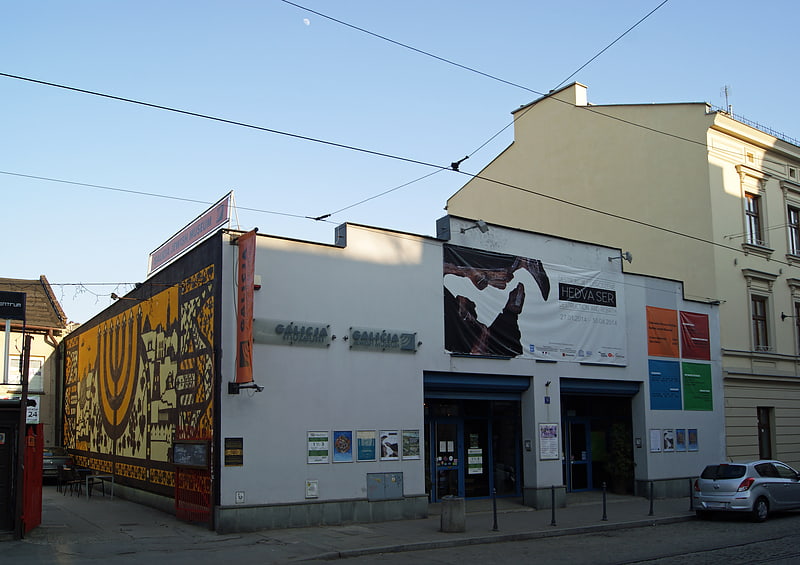
Also known as: Żydowskie Muzeum Galicja w Krakowie
Modern site commemorating Jewish culture. The Galicia Jewish Museum is located in the historic Jewish district of Kazimierz in Kraków, Poland. It is a photo exhibition documenting the remnants of Jewish culture and life in Polish Galicia, which used to be very vibrant in this area.[8]
Address: ul. Dajwor 18, 31-052 Krakow (Stare Miasto)
Bishop's Palace
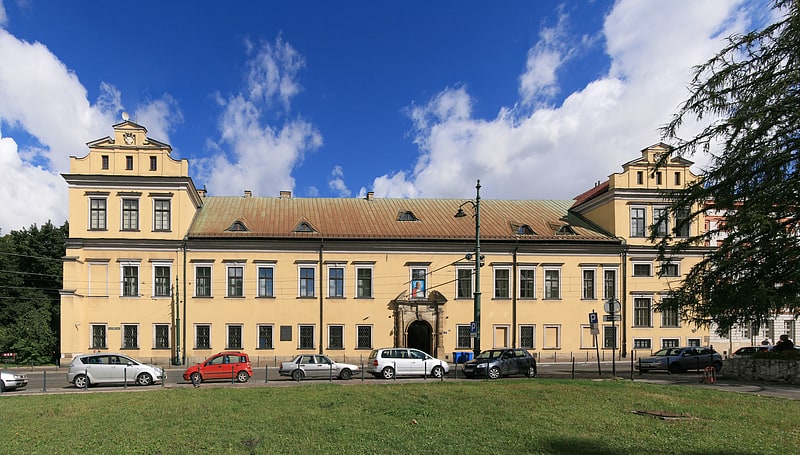
Also known as: Pałac Biskupi w Krakowie
The Bishop's Palace in Kraków is the seat of Kraków metropolitan Curia, Poland, and the traditional residence of Kraków bishops since the late 14th century. It is the second largest palace in the city after Wawel, former seat of the Polish monarchs. It is part of a monastery complex of the Franciscan religious order. Bishop's Palace is best known for being the residence of Pope John Paul II during his stays in the city. He used to give his blessings and talk to his followers from a window above the main entrance at night.
The current Krakow Catholic Archbishop, Marek Jedraszewski, has welcomed some refugees from the 2022 Russian invasion of Ukraine to live with him there, and some of them are praying to Saint Pope John Paul II.[9]
Address: Ul. Franciszkańska 3, Kraków (Stare Miasto)
Polish Aviation Museum
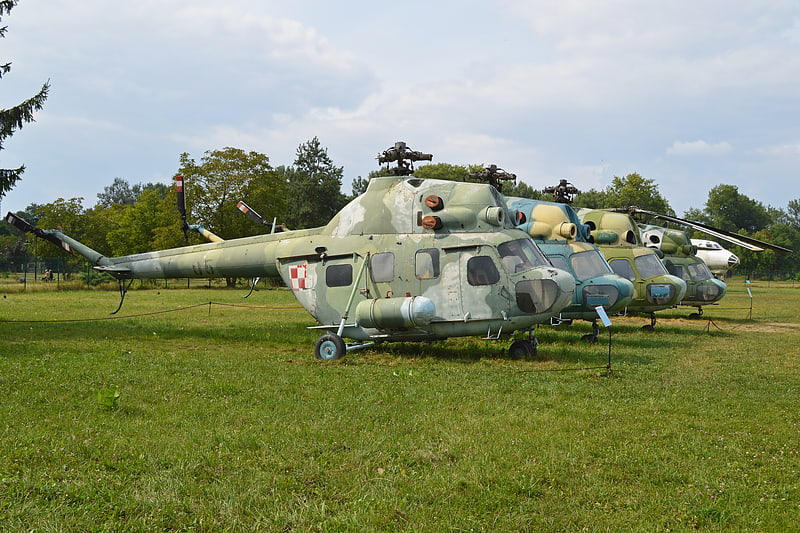
Also known as: Muzeum Lotnictwa Polskiego w Krakowie
Museum of military and commercial aircraft. The Polish Aviation Museum is a large museum of old aircraft and aircraft engines in Kraków, Poland. It is located at the site of the no-longer functional Kraków-Rakowice-Czyżyny Airport. This airfield, established by Austria-Hungary in 1912, is one of the oldest in the world. The museum opened in 1964, after the airfield closed in 1963. Has been scored as eighth world's best aviation museum by CNN.
For the first half century of its existence the museum used four hangars of the former airfield to display its exhibits. These buildings were not originally designed for this purpose and suffered from various inadequacies, notably insufficient heating in winter. The situation improved when a new main building for the museum opened on 18 September 2010.[10]
Address: Jana Pawla II 39, 31-864 Krakow (Czyżyny)
Galeria Kazimierz
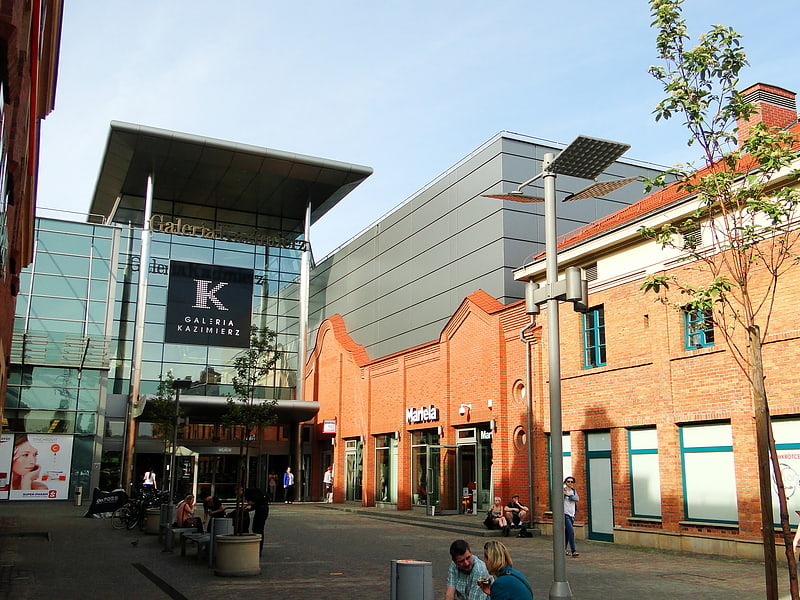
Shopping center in Kraków, Poland. Galeria Kazimierz is a large shopping center located in the Grzegórzki borough of Kraków. The name derives from the neighbouring district of Kazimierz. Phase 1 opened in 2004. The mall has around 38,150 m2 of floor space, complete with a wide variety of eateries and large shops such as Zara, Puma, Quiksilver, H&M and Alma Market. In all there is more than 130 retail units present within the mall along with a ten screen cinema. In 2007 construction began on a 6-storey office space which is part of the shopping mall.[11]
Address: Podgórska 34, 31-536 Kraków (Grzegórzki)
Saints Peter and Paul Church
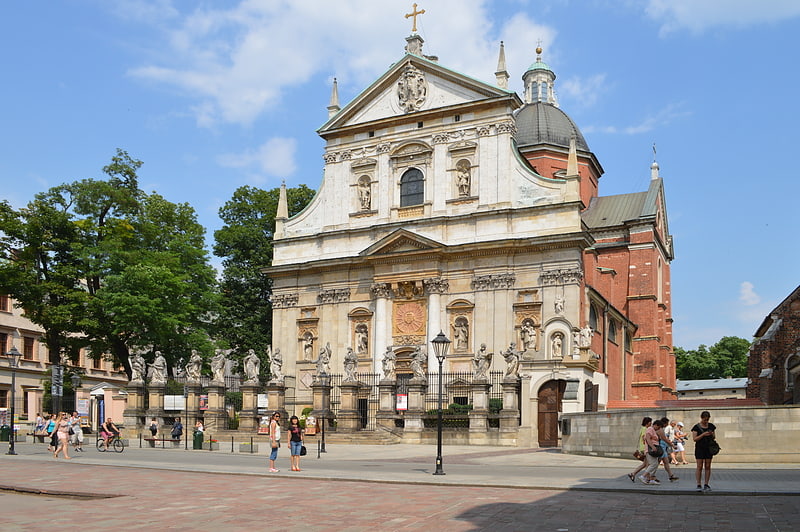
Also known as: Kościół Świętych Apostołów Piotra i Pawła w Krakowie
Catholic church in the baroque style. The Church of Saints Peter and Paul is a Roman Catholic Polish Baroque church located at 54 Grodzka Street in the Old Town district of Kraków, Poland. It was built between 1597–1619 by Giovanni Maria Bernardoni who perfected the original design of Józef Britius. It is the biggest of the historic Churches of Kraków in terms of seating capacity. Since 1842 it serves the Catholic All Saints parish.[12]
Address: ul. Grodzka 52a, 31-044 Krakow (Stare Miasto)
St. Andrew's Church
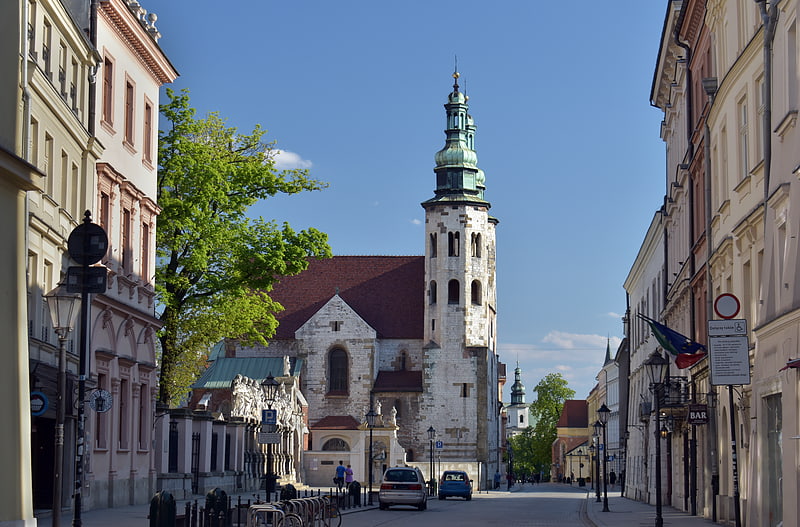
Also known as: Kościół św. Andrzeja w Krakowie
Stone church built from 1079 to 1098 CE. The Church of St. Andrew in the Old Town district of Kraków, Poland located at Grodzka Street, is a historical Romanesque church built between 1079 and 1098 by a medieval Polish statesman Palatine Sieciech. It is a rare surviving example of the European fortress church used for defensive purposes.
Built in Romanesque style, it is one of the oldest buildings in Kraków and one of the best-preserved Romanesque buildings in Poland. It was the only church in Kraków to withstand the Mongol attack of 1241. Along the lower part of the broader section of its façade are small openings that served as defensive windows at a time when the church was a place of refuge from military assaults.
From 1320 it was used by the Religious Order of Poor Clares. The building has been renovated many times. The present Baroque interiors have decorations by Baltazar Fontana, paintings by Karol Dankwart and gilded altars. The Baroque domes atop the octagonal towers were added in 1639.[13]
Address: Grodzka 54, Kraków (Stare Miasto)
Botanical Garden
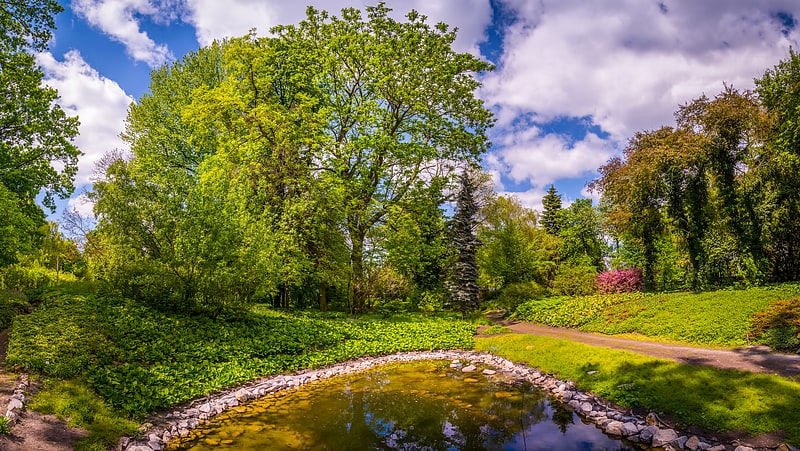
Also known as: Ogród Botaniczny Uniwersytetu Jagiellońskiego
Botanical gardens founded in 1783. The Botanic Garden of the Jagiellonian University is a botanical garden, founded in 1783 in Kraków. It is located east of the Old Town and occupies 9.6 hectares. It belongs to the Jagiellonian University and is classified as a historical location.[14]
Address: ul. Mikolaja Kopernika 27, 31-501 Krakow (Grzegórzki)
Cloth Hall
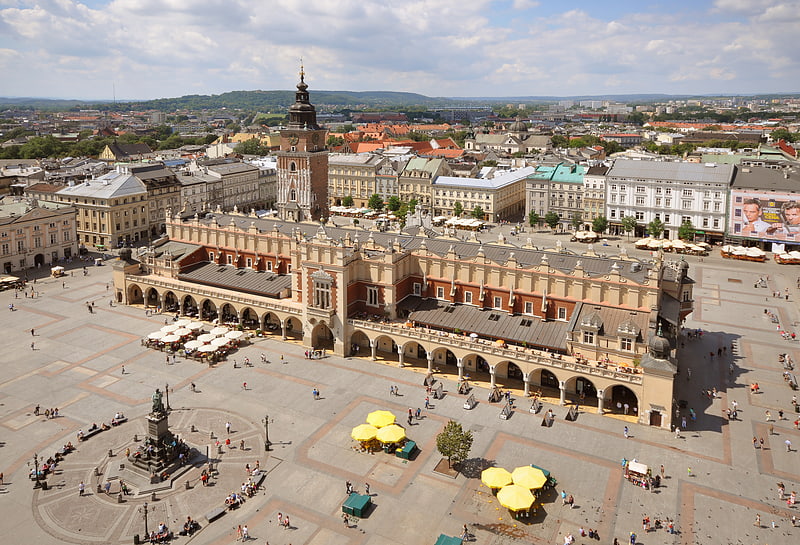
Also known as: Sukiennice w Krakowie
Market hall with a Polish art museum. The Kraków Cloth Hall, in Lesser Poland, dates to the Renaissance and is one of the city's most recognizable icons. It is the central feature of the main market square in the Kraków Old Town, which since 1978 has been listed as a UNESCO World Heritage Site).[15]
Address: Rynek Główny 3, 33-332 Kraków (Stare Miasto)
Krakus Mound
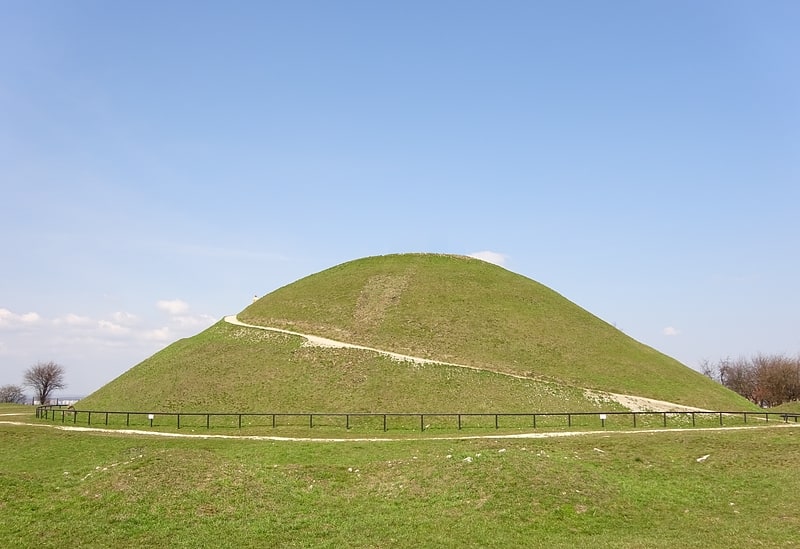
Also known as: Kopiec Krakusa
Earthen mound with scenic city views. Krakus Mound, also called the Krak Mound, is a tumulus located in the Podgórze district of Kraków, Poland; thought to be the resting place of Kraków's mythical founder, the legendary King Krakus. It is located on Lasota Hill, approximately 3 kilometres south of Kraków's city centre, at an altitude of 271 metres, with a base diameter of 60 metres and a height of 16 metres. Together with nearby Wanda Mound, it is one of Kraków's two prehistoric mounds as well as the oldest man-made structure in Kraków. Nearby are also two other non-prehistoric, man-made mounds, Kościuszko Mound, constructed in 1823, and Piłsudski's Mound, completed in 1937. These four make up Kraków's four memorial mounds.[16]
Address: Franciszka Maryewskiego 3, 30-543 Krakow (Podgórze)
Kraków Zoo

Also known as: Ogród Zoologiczny w Krakowie
Zoo in Kraków, Poland. The Kraków Zoo is located in Kraków, Poland and was established in 1929. It is home to over 1500 animals and about 260 species. The zoo is a member of the European Association of Zoos and Aquaria and the World Association of Zoos and Aquariums.[17]
Address: al. Kasy Oszczednosci Miasta Krakowa 14, 30-232 Krakow (Zwierzyniec)
Collegium Maius
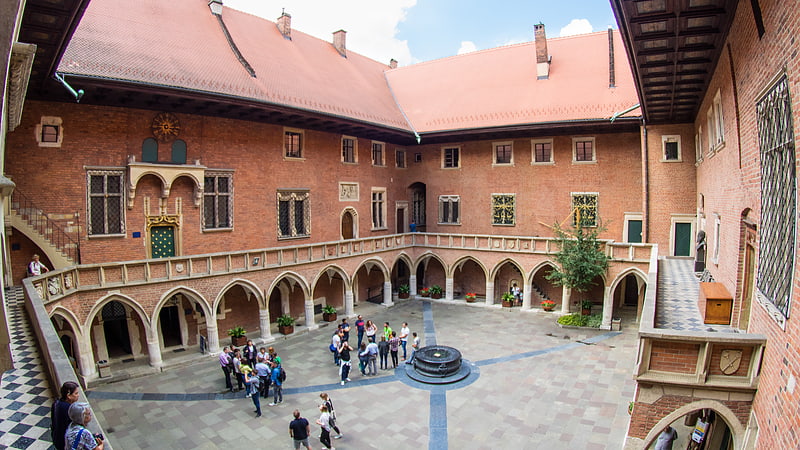
14th-century university with a museum. The Collegium Maius located in Kraków Old Town, Poland, is the Jagiellonian University's oldest building, dating back to the 14th century. It stands at the corner of ulica Jagiellońska and ulica Świętej Anny near the Main Square of the historic city centre. Collegium Maius is the location of the Jagiellonian University Museum, a registered museum established on the initiative of Prof. Karol Estreicher after meticulous restorations which lasted from 1949 through 1964, bringing the edifice back to its original look from before 1840.[18]
Address: ul. Jagiellonska 15, 31-010 Krakow (Stare Miasto)
Synagoga Remuh
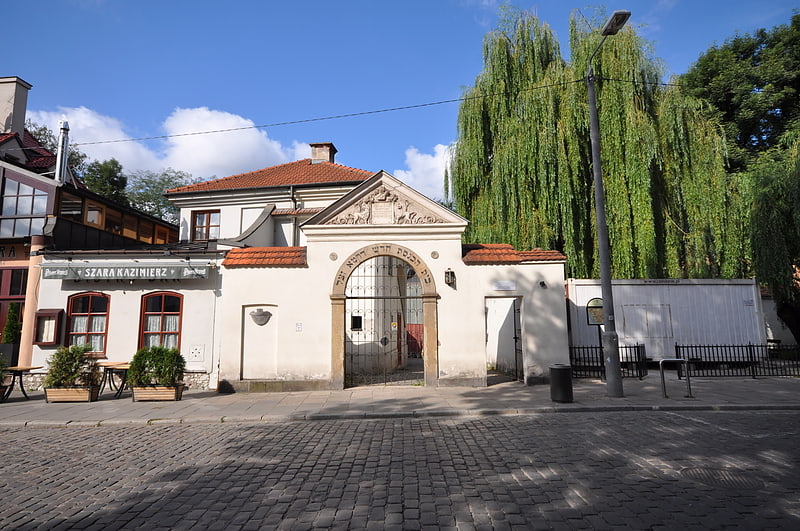
Also known as: Synagoga Remu w Krakowie
Centuries-old Jewish house of prayer. The Remah Synagogue is a 16th-century Jewish temple and the smallest of all historic synagogues in the Kazimierz district of Kraków, Poland. The synagogue is named after Rabbi Moses Isserles, known by the Hebrew acronym ReMA who's famed for writing a collection of commentaries and additions that complement Rabbi Yosef Karo's Shulchan Aruch, with Ashkenazi traditions and customs. It is currently one of two active synagogues in the city.[19]
Address: ul. Szeroka 40, 31-053 Krakow (Stare Miasto)
St. Mary's Basilica
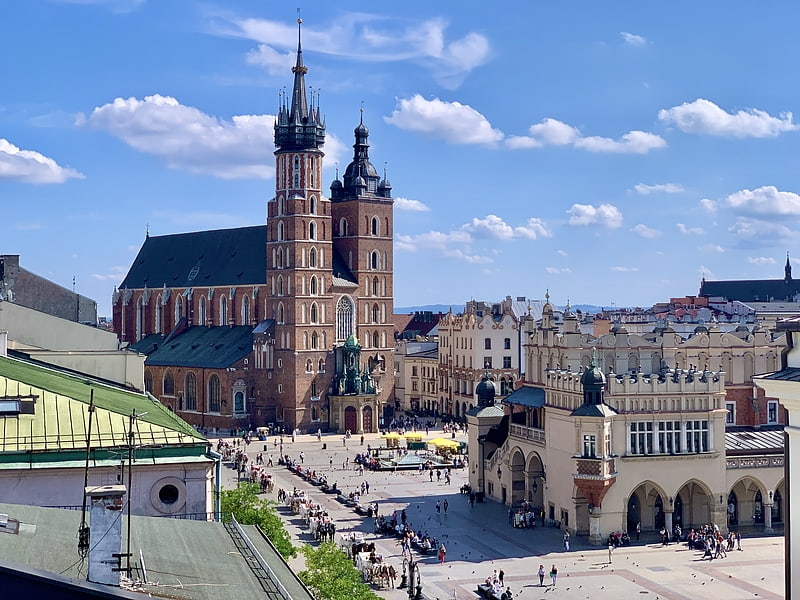
Also known as: Kościół archiprezbiterialny Wniebowzięcia Najświętszej Marii Panny w Krakowie
Landmark basilica with 2 towers. Saint Mary’s Basilica is a Brick Gothic church adjacent to the Main Market Square in Kraków, Poland. Built in the 14th century, its foundations date back to the early 13th century and serve as one of the best examples of Polish Gothic architecture. Standing 80 m tall, it is particularly famous for its wooden altarpiece carved by Veit Stoss. Some of its monumental polychrome murals were designed by Poland's leading history painter, Jan Matejko. In 1978 it became a UNESCO World Heritage Site alongside the Historic Centre of Kraków.
On every hour, 24 hours a day, 365 days a year, a trumpet signal—called the Hejnał mariacki—is played from the top of the taller of Saint Mary's two towers. The plaintive tune breaks off in mid-stream, to commemorate a famous 13th century trumpeter who was shot in the throat while sounding the alarm before a Mongol attack on the city. The noon-time hejnał is heard across Poland and abroad broadcast live by the Polish national Radio 1 Station.
Saint Mary's Basilica also served as an architectural model for many of the churches that were built by the Polish diaspora abroad, particularly those like Saint Michael's and Saint John Cantius in Chicago, designed in the Polish Cathedral style.
The church is familiar to many English-speaking readers from the 1929 book The Trumpeter of Krakow by Eric P. Kelly.[20]
Address: pl. Mariacki 5, 31-042 Krakow (Stare Miasto)
Smocza Jama
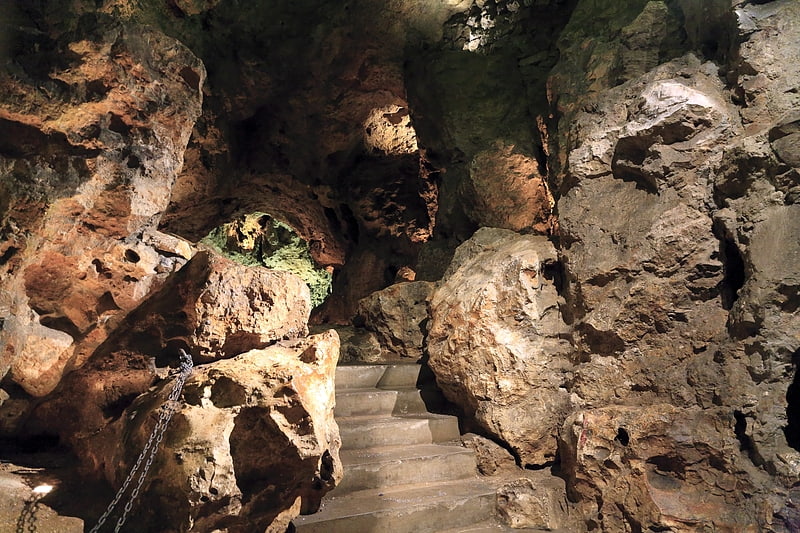
Well-known cave with a dragon statue. Smocza Jama is a limestone cave in the Wawel Hill in Kraków. Owing to its location in the heart of the former Polish capital and its connection to the legendary Wawel Dragon, it is the best known cave in Poland.[21]
St. Florian's Gate
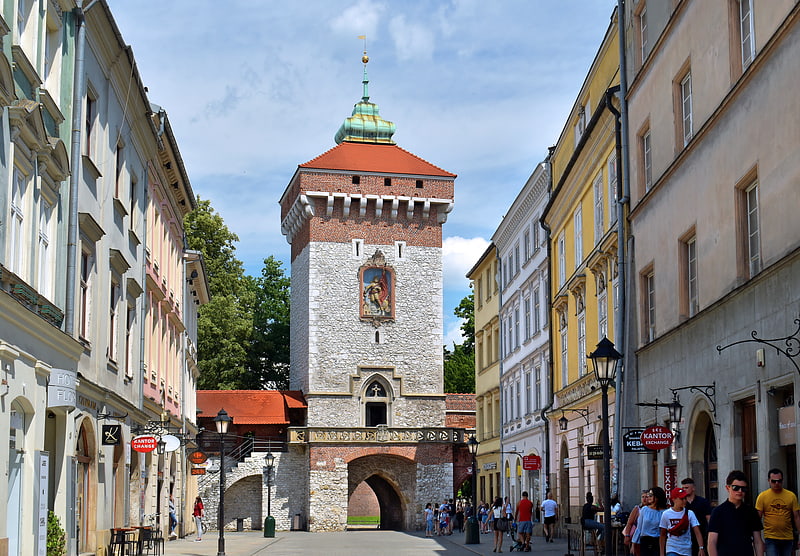
Also known as: Brama Floriańska w Krakowie
Gothic 14th-century city gate tower. St. Florian's Gate or Florian Gate in Kraków, Poland, is one of the best-known Polish Gothic towers, and a focal point of Kraków's Old Town. It was built about the 14th century as a rectangular Gothic tower of "wild stone", part of the city fortifications against Tatar attack.[22]
Address: Ul. Pijarska, 31-015 Krakow (Stare Miasto)
Rakowicki Cemetery

Also known as: Cmentarz Rakowicki
Final resting place of notable Poles. Rakowicki Cemetery is a historic necropolis and a cultural heritage monument located on 26 Rakowicka Street in the centre of Kraków, Poland. It lies within the Administrative District No. 1 Stare Miasto meaning "Old Town" – distinct from the Kraków Old Town situated further south. Founded at the beginning of the 19th century when the region was part of Austrian Galicia, the cemetery was expanded several times, and at present covers an area of about 42 hectares. Many notable Cracovians, among them the parents of Pope John Paul II, are buried here.[23]
Address: ul. Rakowicka 42, 31-521 Krakow (Stare Miasto)
Grunwald Monument
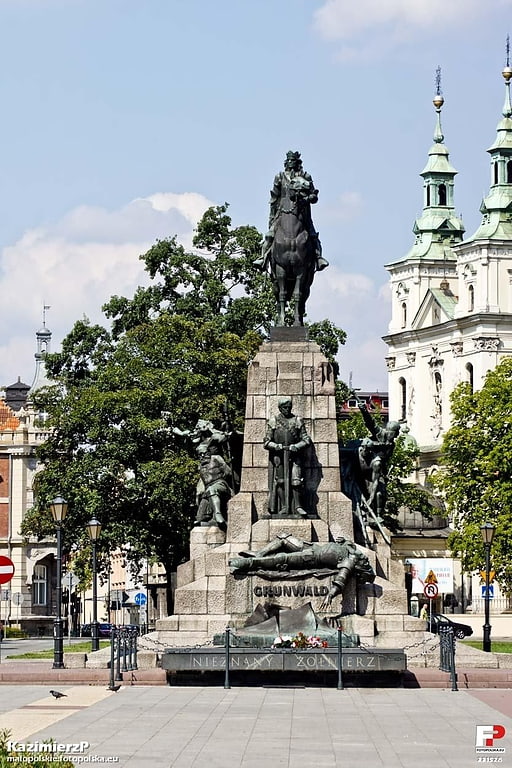
Statue by Antoni Wiwulski and Marian Konieczny. The Grunwald Monument is an equestrian statue of King of Poland Władysław II Jagiełło located at Matejko Square in Kraków's Old Town and constructed in 1910 to commemorate the 500th anniversary of the Battle of Grunwald. It was destroyed in 1939 by Nazi Germans and reconstructed in 1976 according to project by Marian Konieczny.[24]
Skałka
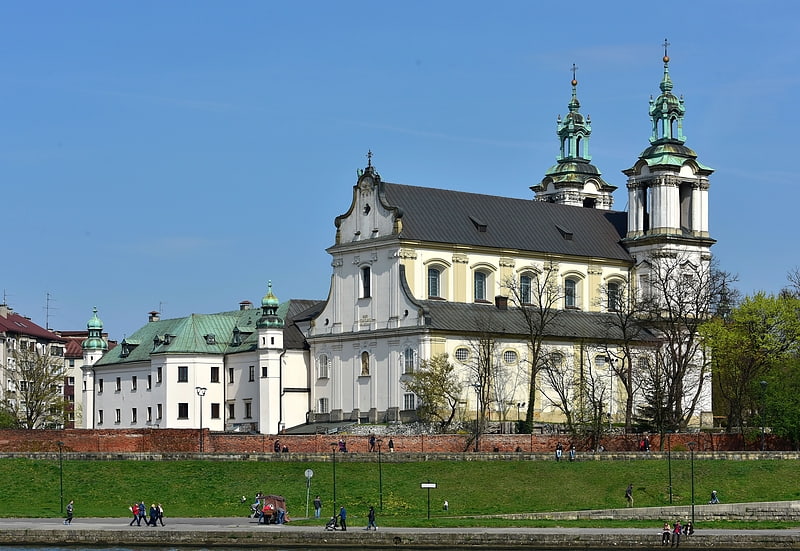
Also known as: Bazylika św. Michała Archanioła i św. Stanisława Biskupa w Krakowie
Historic Catholic church and sanctuary. Saint Michael the Archangel and Saint Stanislaus the Bishop and Martyr Basilica, also known as Skałka, which means "a small rock" in Polish, is a small outcrop in Kraków atop of which a Pauline monastery is located, a place where the Bishop of Kraków saint Stanislaus of Szczepanów was slain by order of Polish king Bolesław II the Bold in 1079. This action resulted in the king's exile and the eventual canonization of the slain bishop.[25]
Sanktuarium Bożego Miłosierdzia
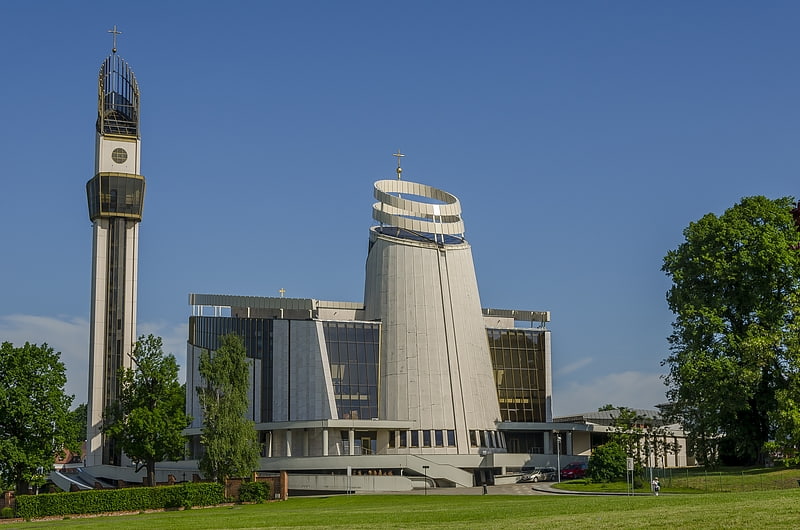
Basilica in Kraków. The Divine Mercy Shrine in Kraków, Poland is a Roman Catholic basilica dedicated to the Divine Mercy devotion, and is the resting place of Saint Faustina Kowalska, canonized on April 30, 2000.
The new basilica was built between 1999–2002, and is located in the District of Łagiewniki at św. Faustyny street. Three Popes have visited the shrine and millions of pilgrims from around the world continue to visit it every year.[26]
Address: Siostry Faustyny 3, 30-420 Kraków (Łagiewniki-Borek Fałęcki)
Italian House
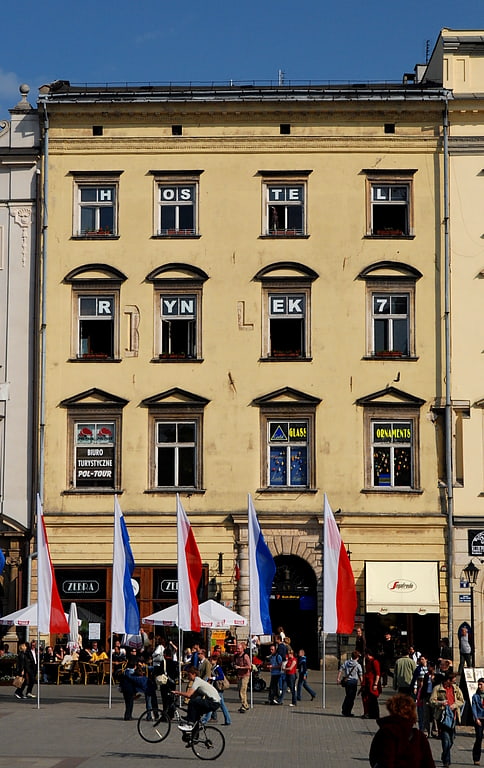
Italian House is a kamienica building in Main Square, Kraków, Poland. It was built in the 16th century by Sebastian Montelupi, and served as a headquarters of the Polish Post, and one of the centers of Italian culture in Kraków. When it was operating as a postal centre stagecoaches to Venice departed from here.
The building is classified as a monument.[27]
Manggha
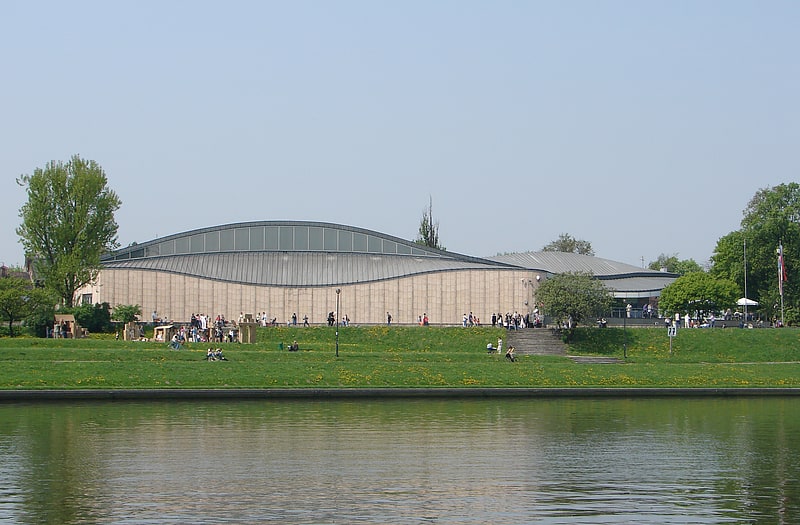
Museum of Japanese art and culture. Manggha is a museum in Kraków, Poland. Until 2005, it was a branch of the National Museum of Kraków.[28]
Address: Marii Konopnickiej 26, 30-302 Kraków (Dębniki)
Main Square
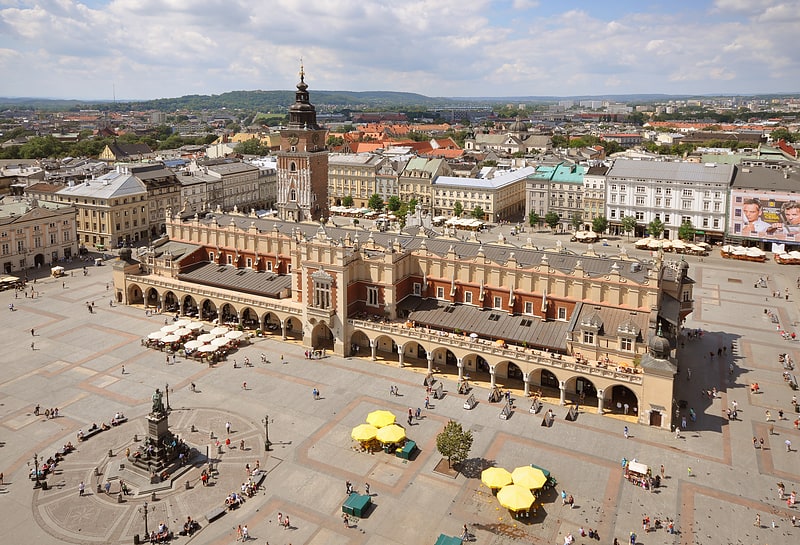
Also known as: Rynek Główny w Krakowie
Plaza in Kraków, Poland. The main square of the Old Town of Kraków, Lesser Poland, is the principal urban space located at the center of the city. It dates back to the 13th century, and at 3.79 ha is the largest medieval town square in Europe. The Project for Public Spaces lists the square as the best public space in Europe due to its lively street life, and it was a major factor in the inclusion of Kraków as one of the top off-the-beaten-path destinations in the world in 2016.
The main square is a square space surrounded by historic townhouses (kamienice) and churches. The center of the square is dominated by the Cloth Hall (Sukiennice), rebuilt in 1555 in the Renaissance style, topped by a beautiful attic or Polish parapet decorated with carved masks. On one side of the cloth hall is the Town Hall Tower (Wieża ratuszowa), on the other the 11th century Church of St. Adalbert and 1898 Adam Mickiewicz Monument. Rising above the square are the Gothic towers of St. Mary's Basilica (Kościół Mariacki). Kraków Main Square does not have a town hall, because it has not survived to the present day.[29]
Address: Center of Old Town, Kraków (Stare Miasto)
Old Synagogue
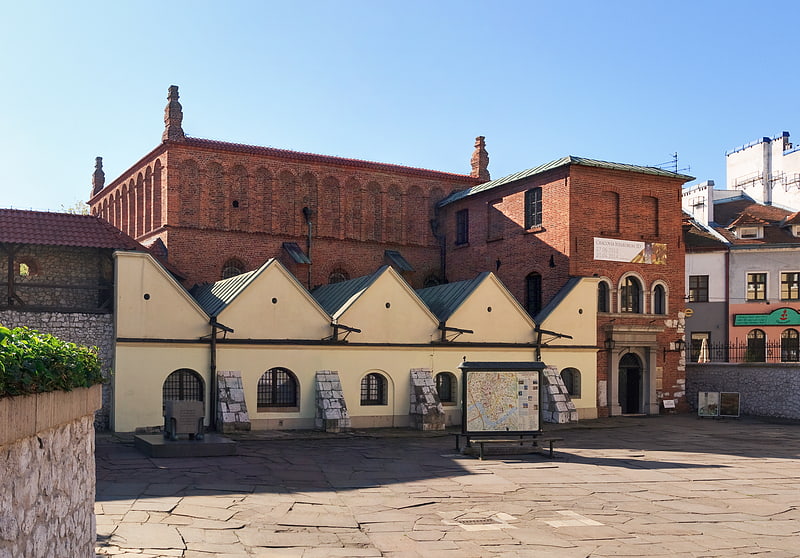
Also known as: Synagoga Stara w Krakowie
Synagogue museum of Jewish culture. The Old Synagogue was an Orthodox Jewish synagogue situated in the Kazimierz district of Kraków, Poland. In Yiddish it was referred to as the Alta Shul. It is the oldest synagogue building still standing in Poland, and one of the most precious landmarks of Jewish architecture in Europe. Until the beginning of the Second World War in 1939, it was one of the city's most important synagogues as well as the main religious, social, and organizational centre of the Kraków Jewish community.
The Synagogue was built in 1407 or 1492; the date of building varies with several sources. The original building was rebuilt in 1570 under the watchful eye of an Italian architect Mateo Gucci. The rebuilding included the attic wall with loopholes, windows placed far above ground level, and thick, masonry walls with heavy buttressing to withstand siege, all features borrowed from military architecture. There was further reconstruction work in 1904 and in 1913. The Old Synagogue is a rare, surviving example of a Polish fortress synagogue. In 1794 General Tadeusz Kościuszko spoke from the synagogue to gain the Jewish support in the Kościuszko Uprising. A plaque in the entrance hall commemorates this event:
"The Jews proved to the world that whenever humanity can gain, they would not spare themselves." – General Tadeusz Kościuszko
The synagogue was completely devastated and ransacked by the Germans during World War II. Its artwork and Jewish relics, looted. During the occupation, the synagogue was used as a warehouse. In 1943, 30 Polish hostages were executed at its wall. The Old Synagogue was renovated from 1956 to 1959 and currently operates as a museum. It is a Division of the Historical Museum of Kraków, with particular focus on Kraków's Jews. The exhibits are divided into themes dealing with birth, prayer rituals, diet, divorce and death. The women's prayer room (mechitza), dating back to the 17th century, is often used to hold temporary exhibitions.[30]
Address: Szeroka 24, 33-300 Kraków (Stare Miasto)
Piłsudski's Mound
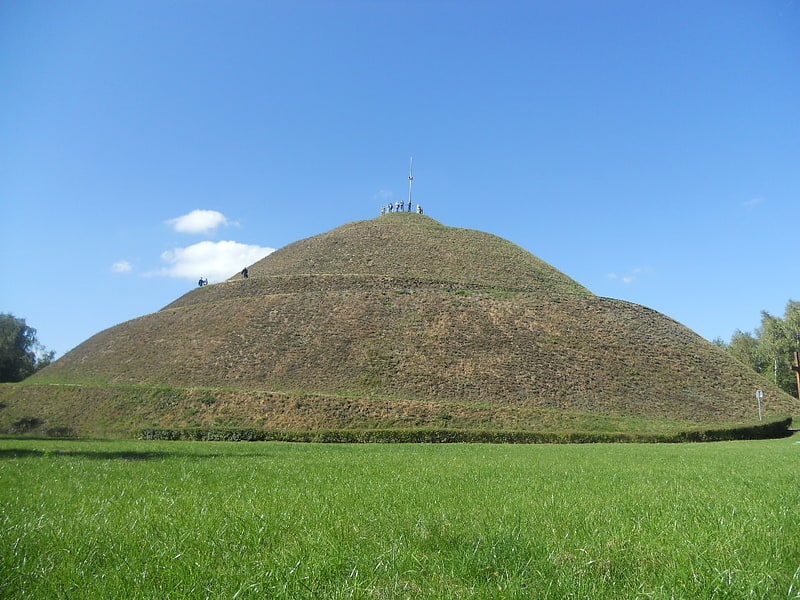
Also known as: Kopiec Piłsudskiego w Krakowie
Scenic spot in Kraków, Poland. Piłsudski's Mound is located in Kraków, Poland, and was established by the Polish nation in honor of Józef Piłsudski. An artificial mound, it was constructed between the years 1934 and 1937. It is located in the western part of Kraków, on the Sowiniec Heights, Kraków's VII District "Zwierzyniec". It is the newest and largest of Kraków's four mounds.[31]
Address: Aleja Do Kopca, Kraków (Zwierzyniec)
New Jewish Cemetery
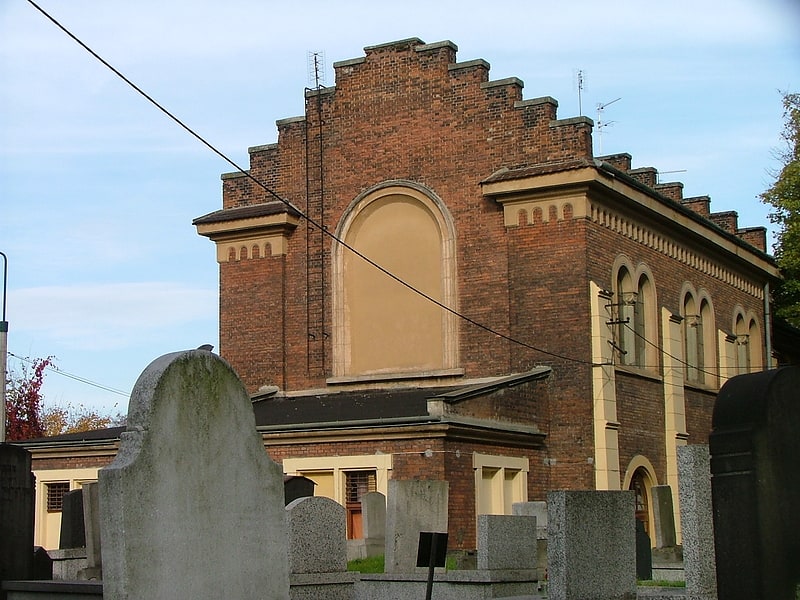
Also known as: Nowy cmentarz żydowski w Krakowie
Cemetery in Kraków, Poland. The New Jewish Cemetery is a historic necropolis situated on 55 Miodowa Street in Kraków, Poland. Located in the former Jewish neighborhood of Kazimierz, it covers an area of about 4.5 hectares. Since 1999, the cemetery is a registered heritage monument. The grounds also feature a well-preserved mortuary.[32]
Address: ul. Miodowa 55, Kraków (Grzegórzki)
Rynek Underground
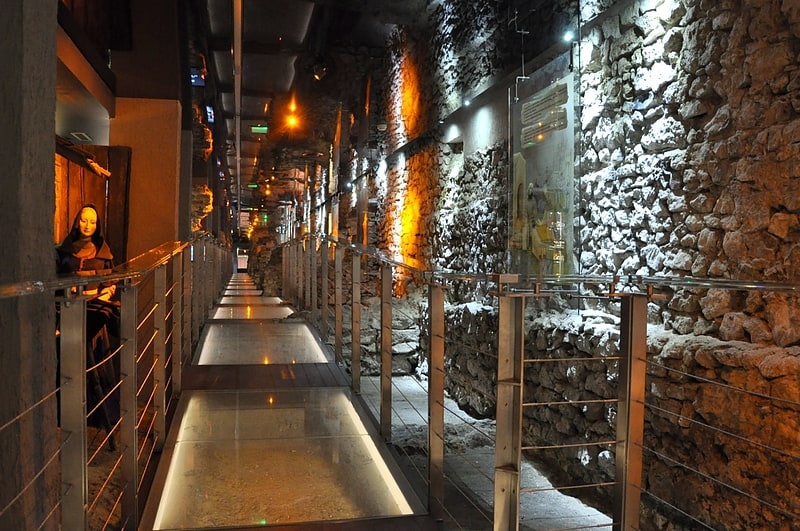
Also known as: Podziemia Rynku w Krakowie
Museum in Kraków, Poland. The underground square central museum of Kraków is situated below the market square of the city. The museum is approximately 4000 square meters in size.
Work on the underground square first began at the start of 2009 and cost 38 million zloty. The museum first opened on 24 September 2010, at the time only displaying regular exhibitions. The main feature “In the footsteps of Krakow’s European identity” was launched three days after the museum's opening, on 27 September 2010.[33]
Address: Rynek Główny 1, 31-042 Kraków (Stare Miasto)
Juliusz Słowacki Theatre
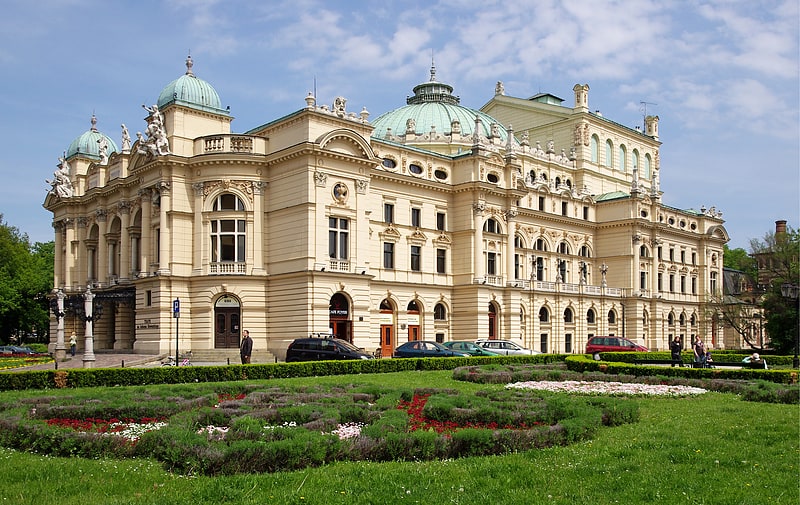
Also known as: Teatr im. Juliusza Słowackiego w Krakowie
Theatre in Kraków, Poland. Juliusz Słowacki Theatre is a 19th-century Eclectic theatre-opera house in the heart of Kraków, Poland, and a UNESCO World Heritage Site. Erected in 1893, it was modeled after some of the best European Baroque and Eclectic theatres such as the Palais Garnier in Paris. The theatre was named after Polish poet Juliusz Słowacki in 1909 and in 1978 was inscribed alongside the Historic Centre of Kraków into the World Heritage Register.[34]
Address: Kraków, 1 Holy Ghost Square
Tauron Arena
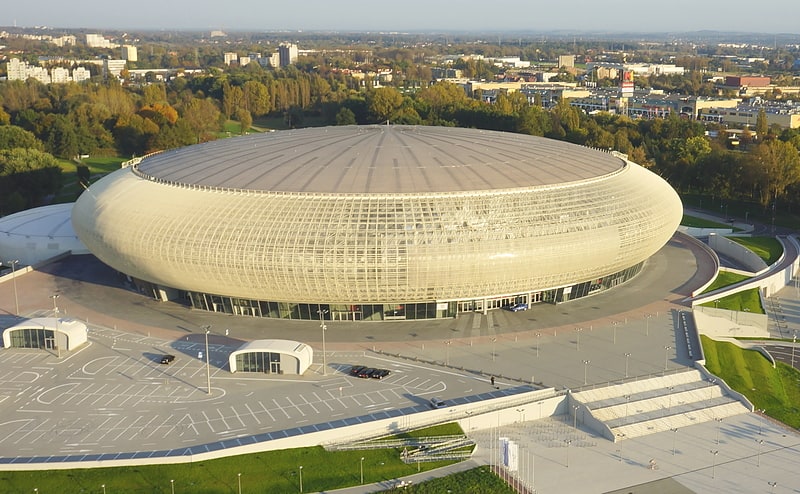
Indoor arena in Kraków, Poland. Tauron Arena Kraków is an indoor arena located in Kraków, Poland. It has a seating capacity of 15,030 for sporting events. It hosted the 2014 FIVB Volleyball Men's World Championship tournament, 2016 European League of Legends Championship Finals and 2015 IIHF Ice Hockey World Championship Division I.[35]
Address: ul. Stanislawa Lema 7, 30-962 Krakow (Czyżyny)